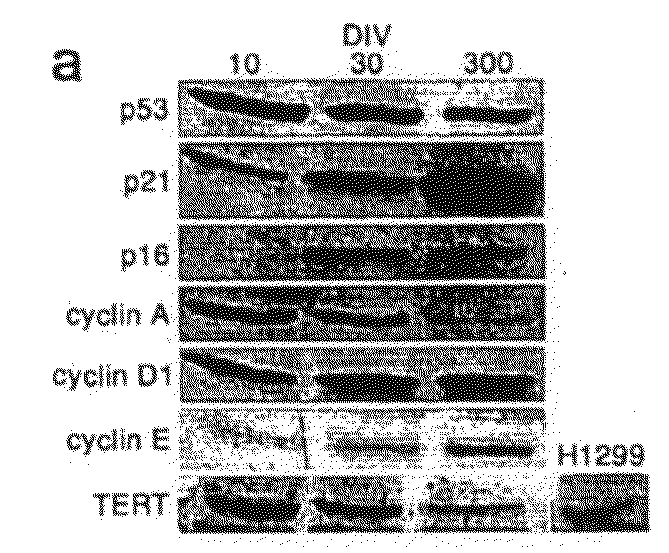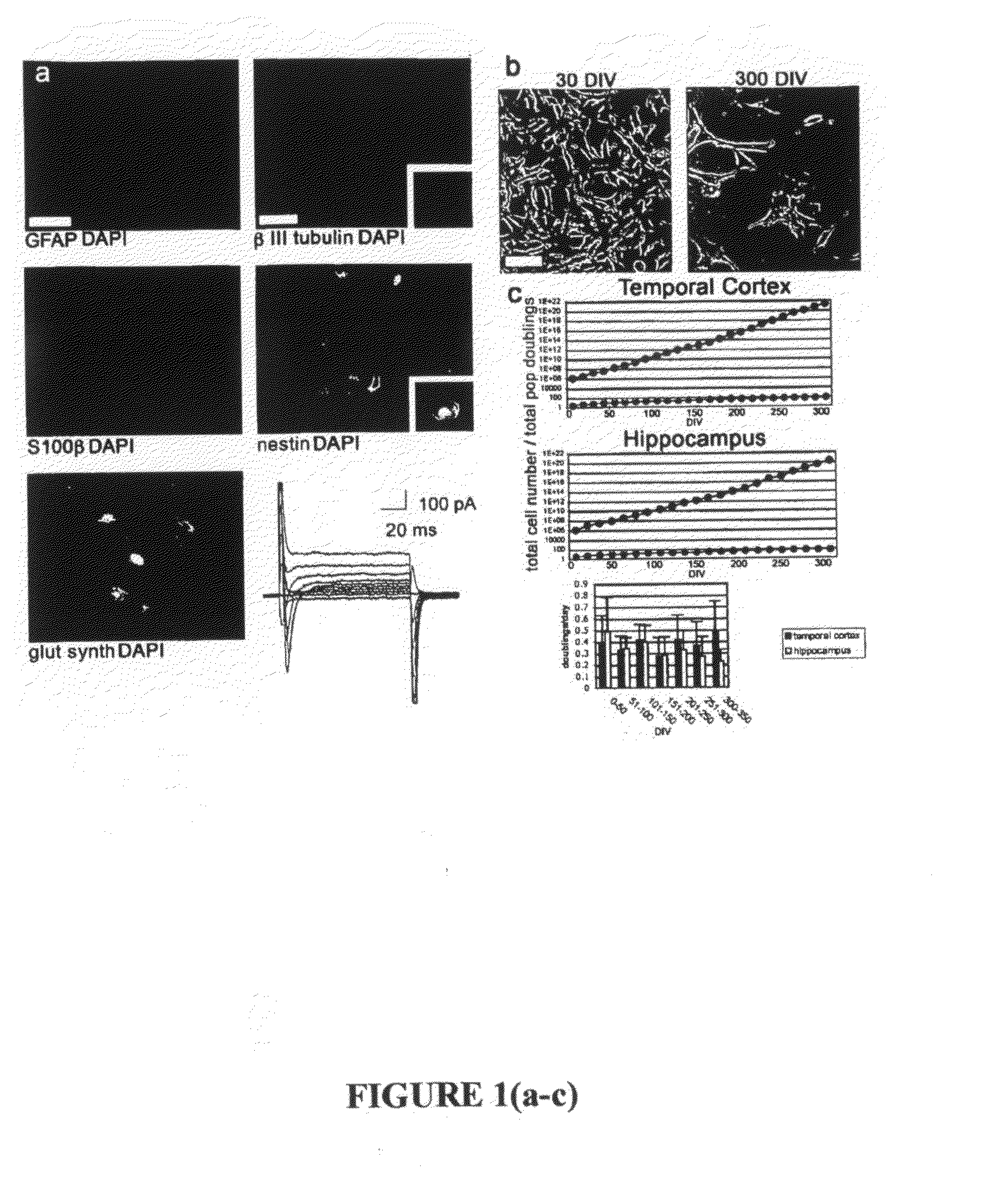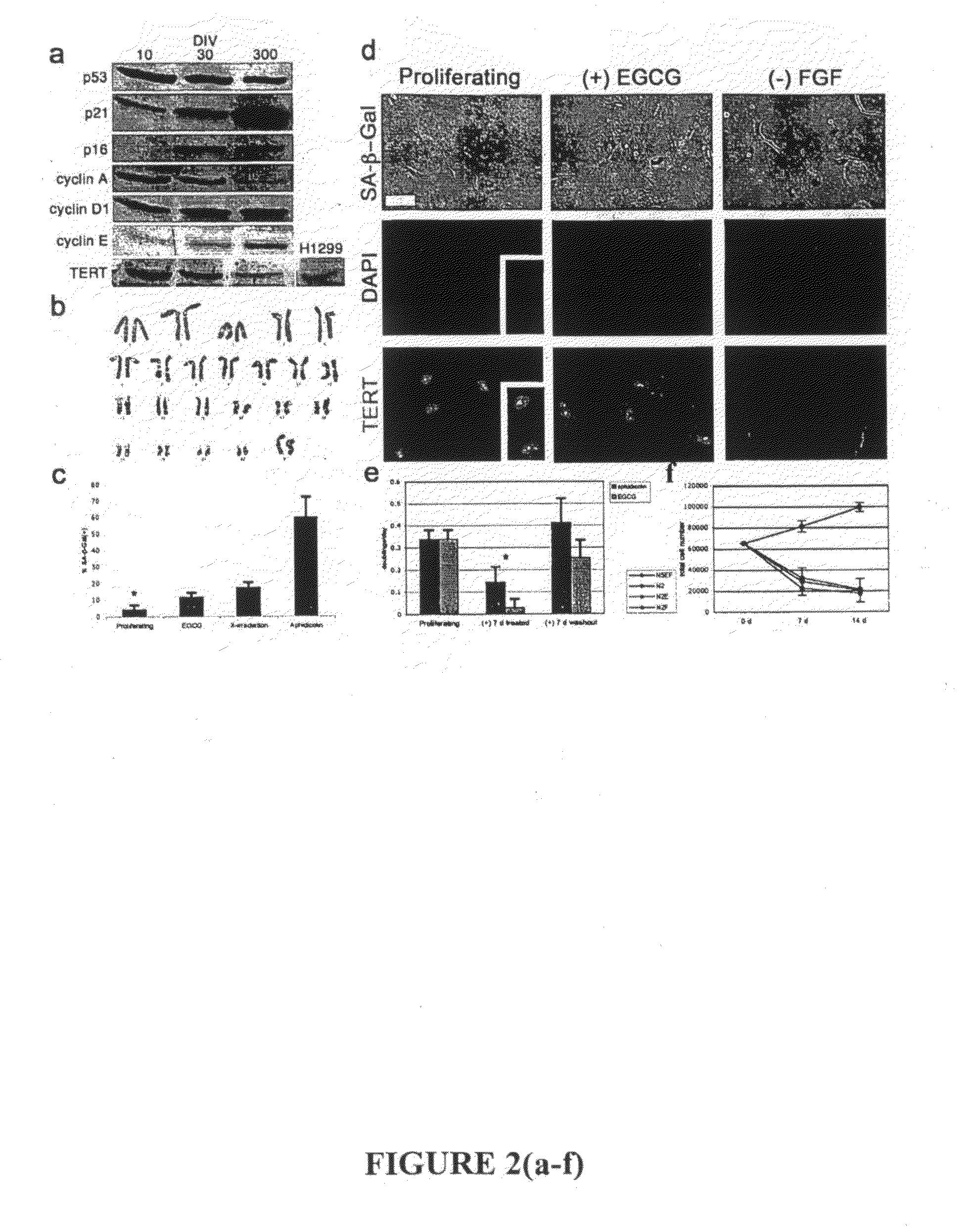Indefinite culture of human adult glia without immortalization and therapeutic uses thereof
a glial culture, indefinite technology, applied in the direction of fused cells, skeletal/connective tissue cells, drug compositions, etc., can solve the problems of limited controllable expansion of cell populations, unable to create standardized cultured somatic cells for widespread use, and doubt in their efficacy as representative tissues for primary pharmacological applications and other bioassays, so as to prevent the formation of neurofibrillary tangles and reduce cholesterol. the effect o
- Summary
- Abstract
- Description
- Claims
- Application Information
AI Technical Summary
Benefits of technology
Problems solved by technology
Method used
Image
Examples
example 1
Isolation and Culture of Primary Cells
[0362]To isolate regionally specific tissue for long-term culture, anterolateral temporal lobe neocortex was removed from patients undergoing temporal resection associated with medically intractable epilepsy. Tissue was microdissected into regions containing hippocampus or temporal cortex gray matter. All procedures were performed with informed consent and were performed in accordance with human tissue handling and use guidelines. Tissues were triturated to single cells and maintained as a monolayer on uncoated plastic dishes throughout culture in defined proliferative media, modified from a standard protocol for the culture of neural stem cells. Growth media contained Dulbecco's Modified Eagle Medium with nutrient mix F-12 (DMEM / F-12) containing N2 supplements, fetal bovine serum, antibiotics, bovine pituitary extract, epidermal growth factor (EGF) and basic fibroblast growth factor (FGF).
[0363]To identify cultured cell types, primary cells wer...
example 2
Cultured Cells Maintain Growth Sensitivity and Avoid Immortalization
[0367]A notable exception to proliferation limits are immortalized tumors, which are able to circumvent cell cycle regulation and expand indefinitely. These cells are distinguishable from normal somatic cells in several ways. Immortalized cells accumulate neoplastic mutations in genes linked to cell cycle control, apoptosis, and survival, and may be characterized by a lack of response to physiological or chemical arrestors of the cell cycle. Furthermore, transformed cells often exhibit irregular growth rates, and do not undergo growth contact inhibition in monolayer cultures.
[0368]Immortalization of human cells is marked by the aberrant expression of key regulatory proteins. To determine the activation status of cell cycle proteins in cultured cells, protein levels for major cell cycle regulatory proteins were measured throughout culture period (FIG. 2A). Cultured cells longitudinally express major cell cycle checkp...
example 3
Rapid Expansion of Purified, Transplantable Cells
[0372]Significant attention has been focused on the development of primary human neural tissue sources for multiple applications in the central and peripheral nervous system (CNS, PNS). Primary cells derived from adult brain provide the committed, developmentally matched cell types desirable for transplantation populations and bioassays when reverted to proliferating precursor populations in vitro. However, these adult populations are limited by a lack of expandability in culture (Kiyono et al., (1998) Nature 396:84-88; Evans et al., (2003) Cancer Res 63:4854-4861).
[0373]Overcoming this barrier in cultured proliferating cells would allow useful expansion of cell populations for a variety of applications. This lack of expandability of primary human cells is potentially linked to the cell cycle arrest and entry into senescence via activation of the p21WAF1 (and subsequent activation of the pI61NK4A) pathway, which has been reported to i...
PUM
| Property | Measurement | Unit |
|---|---|---|
| length | aaaaa | aaaaa |
| time | aaaaa | aaaaa |
| voltages | aaaaa | aaaaa |
Abstract
Description
Claims
Application Information
 Login to View More
Login to View More - R&D
- Intellectual Property
- Life Sciences
- Materials
- Tech Scout
- Unparalleled Data Quality
- Higher Quality Content
- 60% Fewer Hallucinations
Browse by: Latest US Patents, China's latest patents, Technical Efficacy Thesaurus, Application Domain, Technology Topic, Popular Technical Reports.
© 2025 PatSnap. All rights reserved.Legal|Privacy policy|Modern Slavery Act Transparency Statement|Sitemap|About US| Contact US: help@patsnap.com



